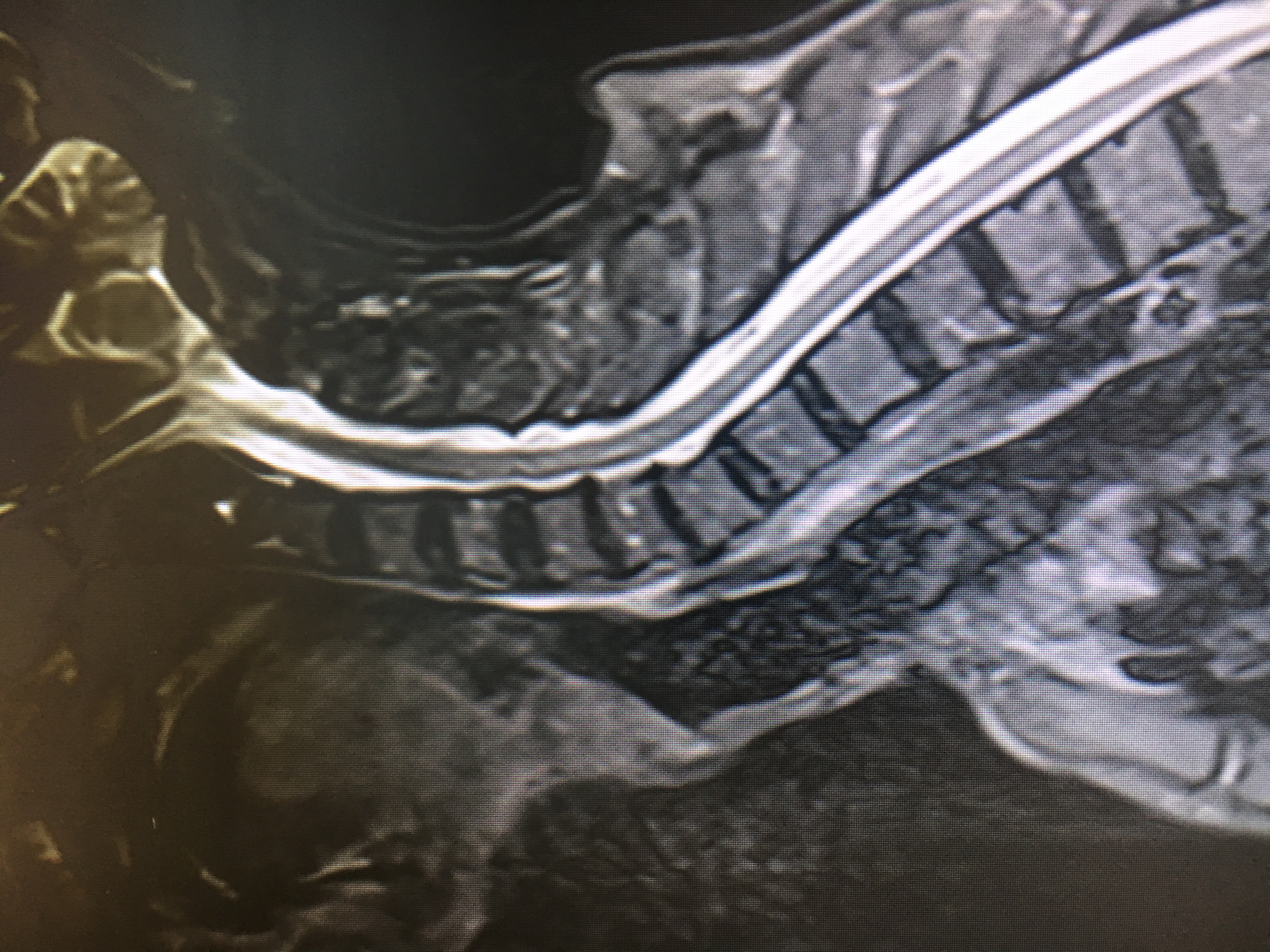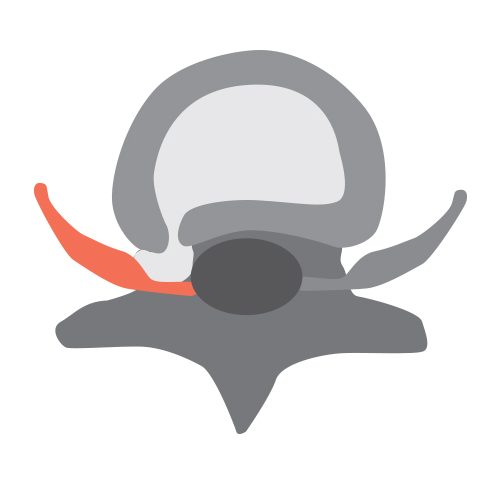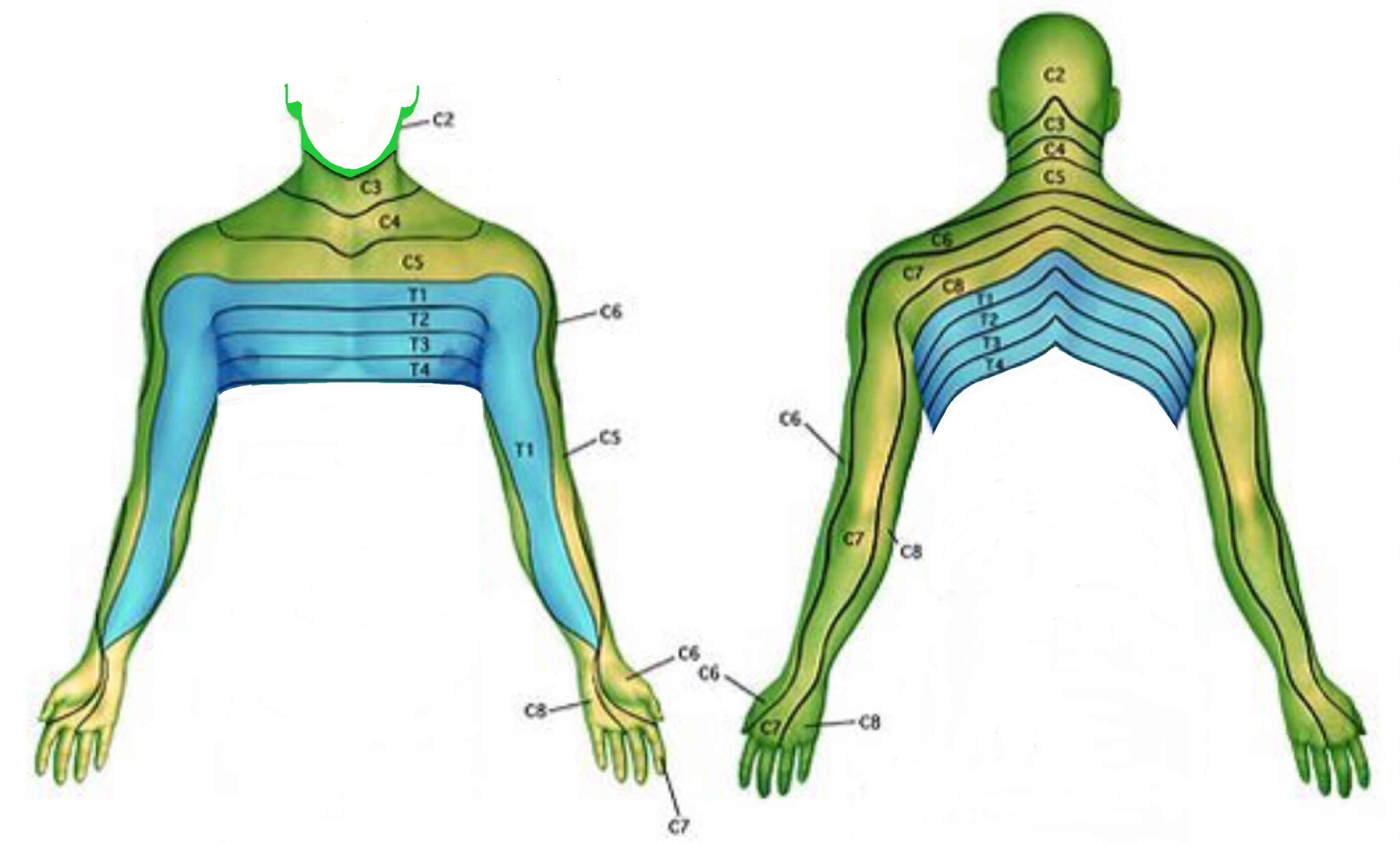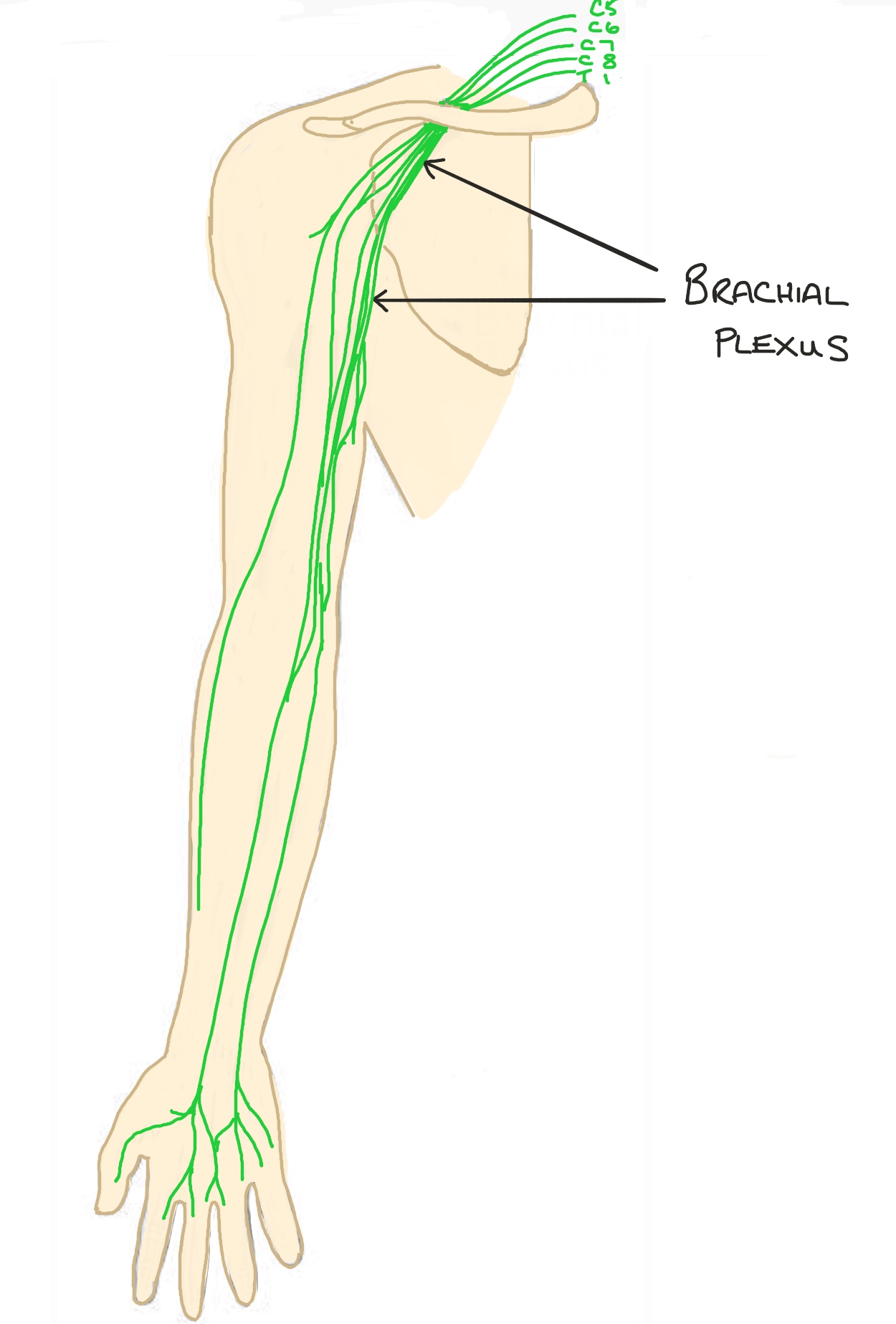Chronic Neck pain
As with low back pain, neck pain is very common especially as you get older. The cervical spine (the neck) and the lumbar spine (the low back) are the most flexible parts of the spine and therefore are most prone to ‘wear and tear’ or degeneration; the medical name for this is Cervical Spondylosis or arthritis in the neck. Cervical spondylosis is very common and affects the bones, cartilage and intervertebral discs in your cervical spine.
Acute Neck Pain
Sudden onset or ‘acute’ neck pain is different to chronic neck pain caused by wear and tear and usually resolves after a few weeks (less than 6 weeks). Common causes of acute, sudden onset neck pain include:
- the neck becoming stuck in an awkward position often whilst sleeping
- bad posture caused by sitting at a desk/computer for long hours
- an irritated or compressed nerve in the neck
- an injury for example, whiplash from an accident or fall
Red Flags
If you have neck pain in association with the following your see your doctor urgently
- If there has been any trauma to the neck
- if you have osteoporosis
- if there are symptoms of myelopathy eg loss of balance, difficulty walking
- if you have a history of cancer
- if you have unexplained weight loss
- if you have a fever that coincides with the sudden onset neck pain
- if your neck pain is associated with dizziness, drop attacks, blackouts.


MRI scan of the cervical spine showing normal wear and tear or ‘spondylosis’
What causes arm pain?
Spinal nerves carry ‘messages’ (via electrical impulses) to the brain about sensation and they send messages to the muscles and tissues to make them move and function. The spinal nerves that supply the arms originate in the neck and top of the thoracic spine (C1 – T1).
Like elsewhere in the spine, cervical nerves can be irritated and pressed on by disc prolapses, degenerate discs or stenosis caused by wear and tear. When nerves get pressed on or irritated they send warnings messages to the brain in the form of pain, burning sensation, reduced or altered sensation. Sometimes the irritation of the nerve causes weakness in a certain muscle group (called a ‘myotome’) that is supplied by that nerve. For example irritation of the C6 nerve root usually causing symptoms across the bottom of the neck, radiating over the shoulder tip, medial side of the arm into the thumb.
‘Numbness’ means the nerve is dead and if you were to put a needle into your skin you would not feel it – if you can feel a needle being stuck into you then your sensation is reduced and is not described as being ‘numb’. Although reduced and altered sensation maybe very annoying it is not the same as pain – it is important to distinguish between pain and reduced/altered sensation.
‘Radicular pain’ is a term doctors use to describe pain when it is mainly from a single nerve root. Arm pain may also be referred from the shoulder, however generally this does not go below then elbow and is improved by treating the underlying shoulder pain.
If the spinal cord becomes compressed is can cause Myelopathy.
As in the lumbar spine, the most common cause is a cervical disc prolapse, but other causes include bony spurs called osteophytes, or rare causes such as tumours or infection. Disc prolapses are also called ‘herniated’, ‘slipped’, ‘bulging’ or ‘ruptured’ discs. The size of the disc prolapse is NOT always proportional to the amount of pain or weakness felt. A very small disc prolapse in the wrong place can cause severe pain whereas a large central prolapsed might not cause any symptoms.
So the important thing to remember is, just because you have a disc prolapse does not mean you will have symptoms and it certainly does not necessarily mean you need surgery.
Diagnosis
Mr Hilton always takes a detailed history and performs a neurological examination as the first of any diagnosis process. Imaging is used usually to help confirm, or exclude, a diagnosis and this is generally in the form of weight-bearing X-rays, a MRI scan and occasionally a CT scan .
The important thing to remember is that although you may have a wear and tear or a prolapsed disc, the symptoms need to match your scan. For example, a disc prolapse at C4/5 does not usually cause pain down the back of your arm and into your thumb, first and middle fingers as that is more likely to be coming from the C6/7 level.


The Dermatome chart shows how the the different nerves map out the different areas of the arms, neck and upper torso.

The above diagram illustrates the distribution of the Brachial Plexus arises from C5 – T1 nerve roots
What is Brachial Neuralgia
The brachial plexus is network of nerves in the arm that is made up of the C5, C6, C7 and T1 nerves roots. Theses nerves control the power (muscles) in the shoulder, elbow, wrist and the sensation in the hand. Nerve pain originating from these nerves is called ‘Brachial Neuralgia’ and is very similar in nature to sciatica in the leg, but instead comes from the nerves within the cervical spine.
Brachial Plexus Injuries
Brachial plexus injuries are typically seen after a trauma which causes over extending the arm. Severe brachial plexus are often caused by motorbike accidents and result in complete loss of power, function and feeling of the arm and in addition the person usually experiences extreme pain in the distribution of the brachial plexus.
Treatment
There is generally no surgical treatment for neck pain alone without arm pain or weakness.
Conservative management includes:
- Keep mobile and do regular exercise
- take paracetamol or ibuprofen or you could use ibuprofen gel on your neck
- use a low, firm pillow
- put heat or cold packs on your neck
- Physiotherapy and chiropractic treatment
Spinal Injections
If the neck pain is persistant, localised, severe and is due to wear and tear then facet joint injections or medial branch blocks maybe indicated.
A nerve root injection may help alleviate pain, pins and needles or altered sensation in the arm.
See your doctor if:
- the pain persists after a weeks
- there is pain, pins and needles or altered sensation radiating down the arm/arms
- there is weakness in the arm/arms
- there is night pain (the pain wakes you at night)
Surgery
Cervical spinal surgery is indicated and considered if:
- There is progressing myelopathy
- There the arm pain is severe and all other conservative management has failed
- If there is progressive weakness/loss of power in the arm and hand.
Cervical surgery is a decompression of the nerves and often with an instrumented fusion.


